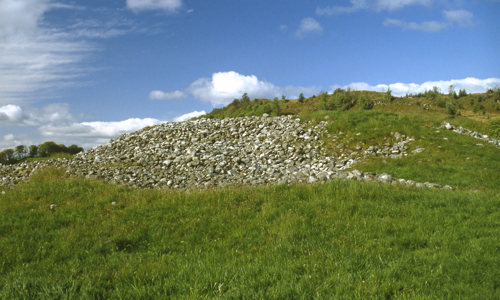History
The Baluachraig carvings are probably about 5,000 years old. The surrounding Kilmartin Glen contains a major concentration of rock art, and ceremonial, ritual and burial monuments that all date to the Neolithic and Bronze Age, about 5,500 to 3,000 years ago.
We don’t know why the rock faces were carved. It’s been suggested that they lay on long-established routes through the landscape, possibly leading to pastures or hunting grounds. They may be related to a time when ritual monuments, rather than settlements, were fixed points in the landscape.
A prehistoric landscape
A rich prehistoric landscape survives in Kilmartin Glen, providing a tantalising insight into its prehistoric population. The surviving rock art along the glen is remarkable for the number of elaborately carved outcrops, the style of and extent of the carvings, and their close association with other prehistoric monuments. No other place in Scotland has such a concentration of prehistoric carved stone surfaces, and Neolithic and Bronze Age monuments.
Other carved rock outcrops around Kilmartin Glen include:
Other monuments include:
- Dunadd Hill Fort
- Dunchraigaig Cairn
- Glebe Cairn
- Nether Largie North Cairn
- Nether Largie Mid Cairn
- Nether Largie South Cairn
- Ri-Cruin Cairn
- Temple Wood Stone Circle
The glen is also home to an important collection of medieval sculptured stones.









